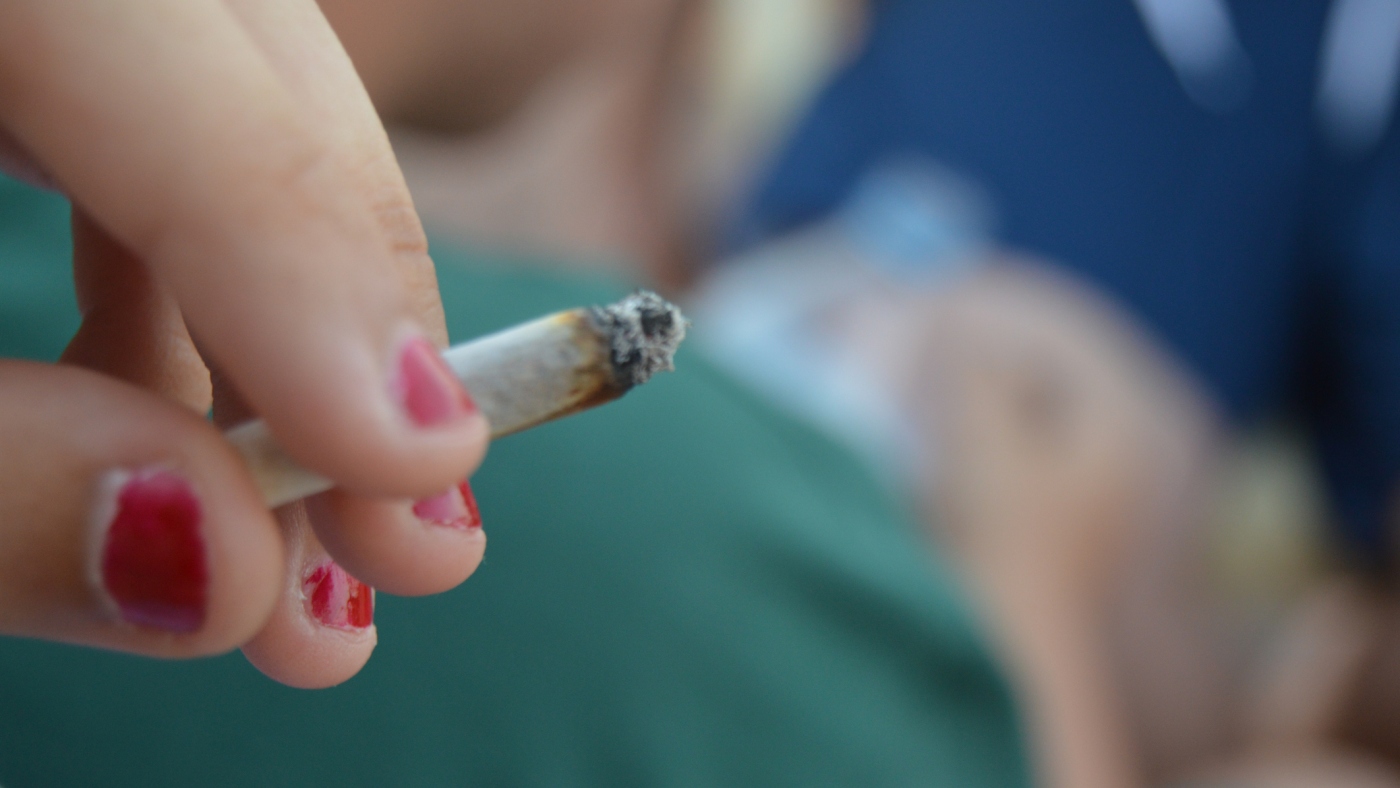It was the late 1980s and the American plan to combat hepatitis B wasn’t working. A vaccine had been available since 1982 and recommended for those deemed to be at highest risk, such as health care workers and men who have sex with men. But the infection rates had gone up, not down. When epidemiologists at the Centers for Disease Control and Prevention dug into the data, they noticed one figure that had stayed alarmingly stable: Between 30% and 40% of hepatitis B patients had no identifiable risk factors at all.
When they published their paper in 1990, it was subtitled, “Need for Alternative Vaccination Strategies.” The next year, the Advisory Committee on Immunization Practices — the CDC body that sets such guidelines — recommended vaccinating all infants. Over the next two decades, case numbers plummeted by 99% among children and teens.
Now, under the Trump administration, some members of the ACIP have hinted at a desire to reverse course when the committee next convenes on Sept. 18 and 19, as part of a broader review of childhood vaccines.
At the last meeting in June, after health secretary Robert F. Kennedy Jr. abruptly fired all 17 experts who sat on the committee and replaced them with his own picks, the new chair, Martin Kulldorff, expressed doubts about the current advice. “Is it wise to administer a birth dose of hepatitis B vaccine to every newborn before leaving the hospital? That’s the question,” he said. “Unless the mother is hepatitis B positive, an argument could be made to delay the vaccine for this infection, which is primarily spread by sexual activity and intravenous drug use.”
To people who study, treat, or have hepatitis B, that argument is dangerously misguided, and if adopted, they warn it could lead to a resurgence of the virus as well as the liver disease and cancer it causes.
“I’m speechless. It’s a failure to recognize why that strategy was put into place,” said Miriam Alter, the first author of that 1990 study, now retired from the CDC and the University of Texas Medical Branch at Galveston. If that argument is taken up by the committee, she went on, “the virus, because it still circulates in the population, will rear its ugly head. We’ll be back in the same situation we were in when we depended upon risk-factor-based screening.”
One reason for giving the first vaccine dose on the first day of life, and the next doses soon after, is that infants are exquisitely vulnerable. A newly minted immune system — still learning what’s foreign and what’s self, not yet able to muster certain protective white blood cells — can allow hepatitis B to run amok, replicating continuously. That happens to fewer than 10% of people who get infected as adults, to 30% of those who get infected between the ages of 1 and 4, and to a whopping 90% of babies who get infected in the first year. If they’re vaccinated, though, that rate nosedives into the single digits.
“What you need to do is get their bodies the tools they need for the babies to start fighting the virus as soon as they are exposed,” said Chari Cohen, president of the Hepatitis B Foundation.
That exposure can take place before an infant has fully entered the world. Hepatitis B is a blood-borne pathogen, and childbirth, be it vaginal or cesarean, is bloody, with a possibility of mother-to-child transmission. While Sen. Rand Paul (R.-Ky.) recently claimed on X that there is “no medical need to give newborns Hep B vaccine if mother is not infected” because “all mothers who deliver in a hospital are tested,” he was quickly corrected by his Senate colleague Bill Cassidy (R.-La.), who posted, “Empirically, this is not true. Not all mothers have prenatal care. Some get infected between testing in the first trimester and delivery. In some cases, the test is overlooked.”
If infection occurs at birth, there’s a 24-hour window of opportunity. “The vaccine needs to be given immediately to help the newborn develop antibodies to fight off that infection they have just been exposed to,” said John Ward, director of the Coalition for Global Hepatitis Elimination, who led the CDC’s viral hepatitis division from 2005 to 2018. “The longer you wait, then the longer that virus has time to set up shop and resist those antibodies.”
But early immunization isn’t only helpful in cases of maternal infection. Hepatitis B is extremely infectious, some 50-to-100 times more easily transmissible than HIV, with more of it typically present in blood, meaning that a smaller speck may suffice for the pathogen to be passed on. Su Wang, a New Jersey physician specializing in hepatitis B, has seen young people with so much virus per milliliter of blood that “the lab test couldn’t even quantify it,” and technicians had to dilute the specimen in order to get a read.
That means that a child’s risk doesn’t end once they come home from the hospital: Transmission can happen in the household or at day care, in the infinitesimal-seeming blood exposure that might stem from a razor nick or shared toothbrush, a bite or scratch from another kid.
Wang is a case in point. She was diagnosed with hepatitis B in her first year of college, when she signed up to donate blood, and she assumed she’d gotten it from her mom. But when her mom got tested, it came back negative. Her maternal grandparents, on the other hand, tested positive. They’d lived with Wang’s family when she was little, and Wang imagines that they may have been her source of exposure, but can’t be sure.
Those cases of early-childhood transmission are rare in the United States, but the consequences can be dire. Often, the virus lurks silently in the liver. It triggers inflammation that kills cells, which means someone may end up needing a transplant. But it also hijacks the genetic machinery and increases the likelihood of mutations. “We hear these stories all the time. Someone wakes up with tremendous pain in their side, they go to the emergency room, and by the end of the day, they’re told they have liver cancer,” Cohen said. “They don’t find out they have hep B until after they’re diagnosed with liver cancer, and they live for six weeks.”
Such horrible outcomes are part of the calculus behind a “birth dose.” While critics of the strategy point out that some countries such as Denmark don’t vaccinate against hepatitis B until later in infancy, American researchers respond that the setting is quite different: Unlike European countries with smaller populations and universal health care systems, the United States has no unified public health apparatus that tracks every baby born and every intervention they receive. Prenatal care falls through the cracks; childhood visits fall through the cracks.
Other issues emerge when trying to screen or vaccinate adults based on their risk, as was recommended in the 1980s. If patients get to the doctor’s office at all, doctors may not think to ask about risk factors. Even if they do, patients might not feel comfortable disclosing their histories of sexual encounters and drug use, for instance, given the potential for stigma. Plus, by then, it might be too late.
“How do you identify individuals before they become ‘at risk’? You can’t,” said Alter. “That’s why immunizing young children was such a successful strategy. Because, by doing that, you immunize the population before they develop risk factors, whatever those risk factors might be.”
Plus, hundreds of millions of people have received the hepatitis B vaccine worldwide, and follow-up studies have shown that it is remarkably safe, with the most common side effects being fever, redness and soreness at the injection site, and vomiting.
It’s easy to forget, when discussing statistics and stratifications of risk, that real people’s lives are at stake. There are antivirals that can help control hepatitis B, but there is no cure. Once people have it, they have it for life. If their immune systems become suppressed, it can roar out of hiding.
After she was diagnosed at 21, during a routine screening before a college semester abroad, Wendy Lo sometimes couldn’t bring herself to go to her appointments. She’d likely been infected from her mom at birth; every visit was a painful reminder of the stigma she’d inherited. “Monitoring was doing a number to my psychology,” said Lo, 52, a former tech professional who now works as a fitness coach and hepatitis B advocate. “It’s just telling me I have this blemish. It’s kind of like a scarlet letter, this stain.”
She eventually did seek care, but at every stage, the virus shadowed her life. She canceled her study abroad program. The need to disclose her status made dating a minefield. Even the mildest of social drinking was off limits, given her elevated risk of liver failure. When she got married, her husband was protected by vaccines but she was terrified of giving the disease to her children. When doctors reassured her, saying that her babies would be safe with the administration of vaccines and other protective proteins, she worried that she might leave them without a mom. “Premature death, that is a very real and perpetual anxiety,” she said.
The fear was heightened as her uncle died of liver failure caused by hepatitis B. There were jobs and promotions Lo didn’t accept because she worried the stress might be too much for her health, or because the new health insurance wouldn’t cover the hepatitis drugs she needed. There are all sorts of medications she’s avoided so as not to burden her liver. In her 40s, when she was diagnosed with scarring of the liver, she became so anxious she couldn’t eat or sleep or make even the most quotidian decision.
She’d been born years too early. But she can’t help but splice those two time frames together, and imagine what might’ve happened if she hadn’t gotten the virus, if she’d gone to do that semester abroad in Nanjing, if she’d stayed in China to start her career as planned — all of the worries and complications and curveballs she could have sidestepped with a vaccine.
Source link

